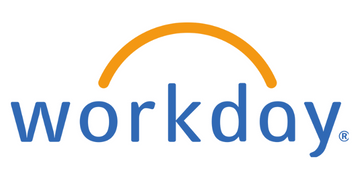To watch the full webinar, click here.
In an era marked by frequent market shifts, supply chain disruptions, and unpredictable global events, businesses worldwide are grappling with the challenges of navigating an increasingly volatile landscape. This heightened uncertainty has underscored the critical need for agility and adaptability in financial planning.
Traditional planning methods have been exposed for their limitations when faced with rapid market changes. In contrast, modern planning practices are emerging as the solution, offering real-time insights, continuous adaptability, and cross-functional collaboration. FP&A is at the forefront of this transformation.
Professionals in the field are experiencing exponential increases in demands, pushing them to evolve and adapt. Traditional planning practices, characterised by siloed and often outdated data, are struggling to keep pace with the dynamic business landscape. Modern planning, however, is paving the way forward with its emphasis on continuous, companywide planning, deeper insights, and the ability to adapt and perform at scale.
To delve deeper into these evolving trends and challenges, The CFO recently partnered with Workday Adaptive Planning for a webinar. This platform brought together industry leaders to discuss the pivotal role of agility and technology in shaping strategic decision-making in finance.
The conversation underscored the pressing need for continuous planning, the importance of cross-functional collaboration, and the transformative power of advanced tools in navigating the complex and uncertain business environment.
Data-driven decisions: the power of automation
The finance teams leading organisations today are embracing agility, using better planning tools, scenario planning, and data analysis to make informed decisions and gain a competitive advantage. Continuous planning, as opposed to static, outdated methods, provides FP&A organisations with a real-time view of the business.
This allows decision-makers to understand current business dynamics and accurately model future scenarios.
As one speaker noted, “the demands on FP&A professionals are increasing, with the need to integrate with different systems and provide insights quickly and frequently.”
This shift is a testament to the changing landscape of the finance industry, where the right information in the right hands can drive better business decisions. A study by Harvard Business Review Analytic Services in association with Workday revealed that while 91% of respondents describe data-driven planning as highly important, only 47% say their organisation’s planning is data-driven to a great extent.
Automation tools are playing a crucial role in this transformation. They help in efficiently distributing and analysing data across the organisation, ensuring that decision-makers have access to the information they need when they need it. As a result, the FP&A function is evolving into a value-creation function, using rich data insights to drive business growth and provide valuable information to the C-suite.
“The future of FP&A is moving towards a more strategic role, where it is involved in value creation and sits at the top table of decision-making,” said one of the speakers.
Planning for the unexpected
Webinar participants noted that traditional planning methods often involve looking backward to assess previous objectives and then looking forward to plan for the next year. However, by the time the annual plan is completed, market conditions may have changed dramatically, rendering the assumptions outdated.
Continuous planning offers a solution by providing FP&A teams with a real-time view of their business, enabling agility with plans that are always current and offering insights with easily created and iterated what-if scenarios.
Similarly, more and more finance teams are leveraging scenario planning to prepare their organisations for uncertainty by creating a playbook for potential business disruptions. It is not about predicting specific causes of disruptions but rather understanding their likely impacts and modelling around those.
Tools like Workday Adaptive Planning are enhancing collaboration and scenario modelling across businesses, enabling better decision-making.
“Scenario analysis can help businesses plan for unexpected events like Covid-19 and prepare for future uncertainties,” one panellist pointed out. For instance, some organisations are running scenarios around potential revenue losses, changes in demand, or shifts in operational costs to prepare for various disruptions caused by recent economic uncertainty.
Running what-if scenarios, such as cost-cutting or changes in demand, helps in preparing contingency plans to address potential financial, operational, and cash flow impacts from various disruptions.
Collaboration is key
Businesses are responding to macro issues and challenges by prioritising cross-functional collaboration. This approach is essential for addressing supply chain issues, finding staff, and navigating global changes.
Technological advancements and global events have forced businesses to be more fluid in their decision-making processes, requiring finance teams to adapt and become more resilient.
Continuous monitoring and updating of scenarios are crucial in order to be responsive to changing market conditions and mitigate potential catastrophic impacts.
“Scenario planning and stress testing models are crucial for quantifying and measuring uncertainties in forecasting, helping businesses prepare for potential risks and impacts,” a panellist emphasised.
All hands-on deck
Getting buy-in from the C-suite and involving the entire business is crucial for successful FP&A and technology implementation. As one speaker noted, “proper data governance and clear objectives are crucial for the success of finance and FP&A projects.”
This highlights the importance of a collaborative approach in the finance function, where everyone is aligned towards the same strategic objectives.
The webinar shed light on the evolving role of FP&A in today’s business environment. It emphasised the importance of agility, continuous planning, and the use of advanced tools in driving strategic decision-making.
As businesses navigate the uncertainties of the future, the role of FP&A is becoming increasingly strategic, driving value creation and growth. The future of FP&A is here, and it’s more strategic, agile, and data-driven than ever before.
To watch the full webinar, click here.
Was this article helpful?
YesNo



